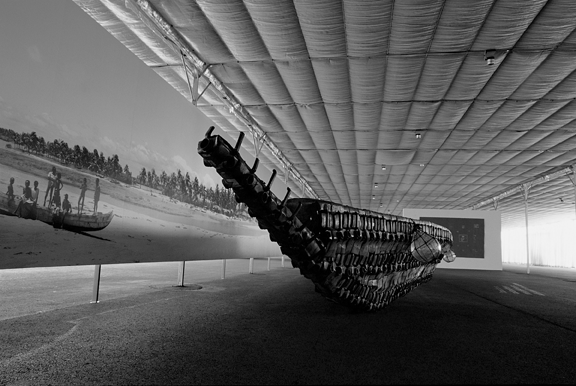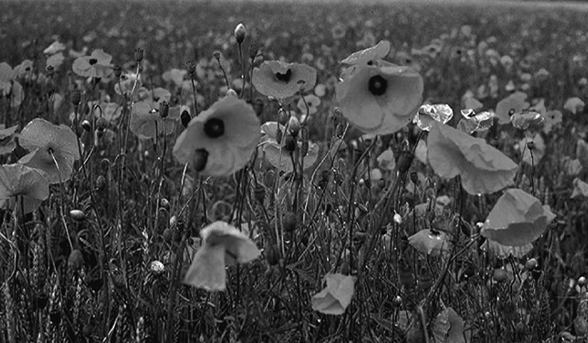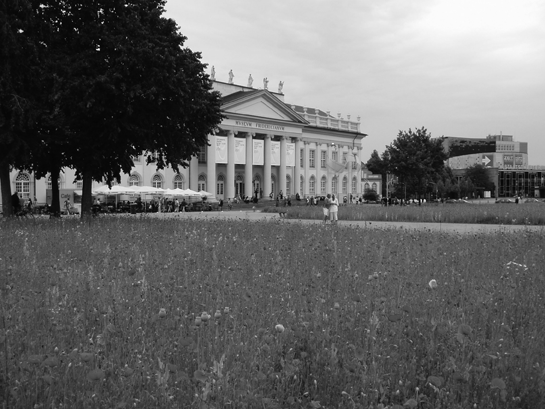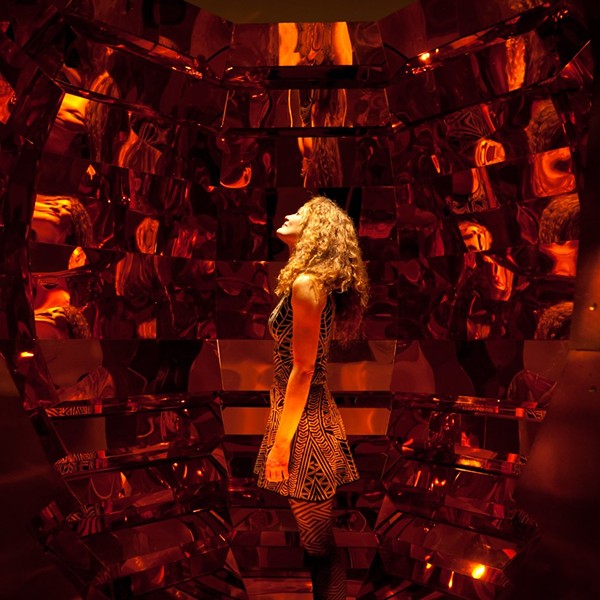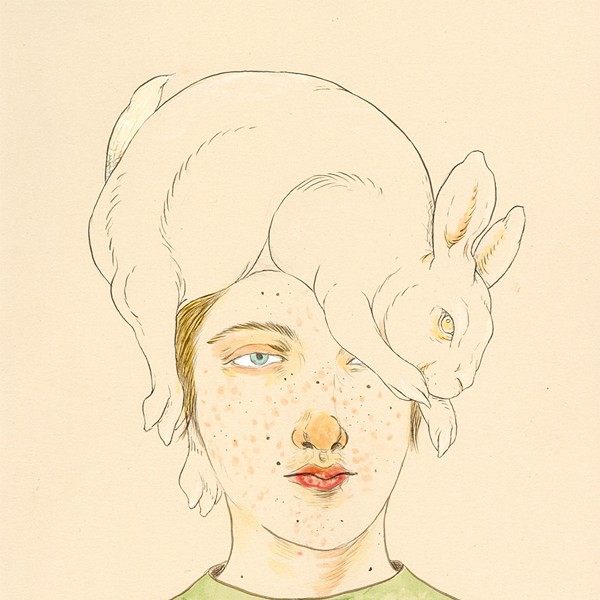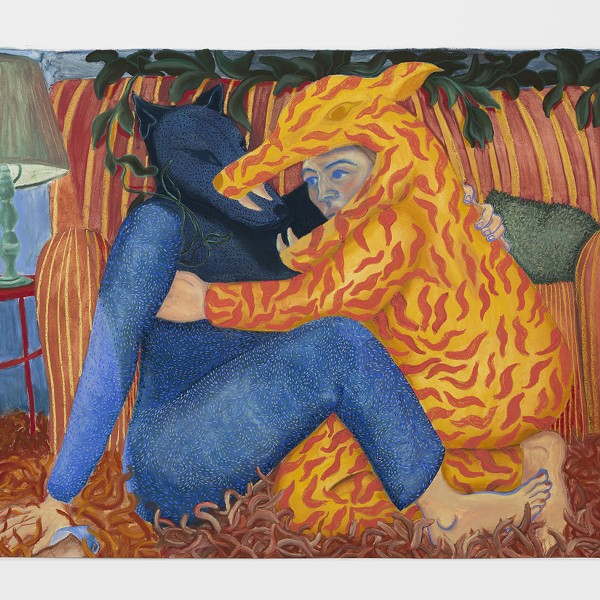The day I arrived in Kassel, the poppies were in full bloom. Apparently, at the opening of Documenta 12 (the latest edition of this huge, once-every-five-years contemporary art extravaganza hosted by the central German city), not a single flower had yet emerged, leaving the broad square in front of the Fridericianum Museum looking like an undistinguished, muddy field.
But now, the flowers had changed the aspect of the Friedrichsplatz into a bright, bobbing field of color, mostly vivid red, with a few purple-white flowers mixed in. Poppies—the flower of sleep, of dreams, of death, and forgetting. Planted by artist Sanja Ivekovic, the field of flowers embraces an enormous range of references, from The Wizard of Oz to contemporary Afghanistan—a point made resoundingly clear twice a day, when loudspeakers on the square play revolutionary songs by RAWA, the Radical Afghan Women’s Association, as a bittersweet reminder of all that has gone wrong, and all there is left to do in the world.
Documenta 12 has been subject to some of the most scathing criticism I’ve ever seen for a major art exhibition (aside from a few editions of the Whitney Biennial). A reviewer for UK paper the Guardian even called it the worst art exhibition ever. Arriving five weeks after the press opening, I had steeled myself for a trainwreck of a show only to find—inspiration.
The list of artists in the exhibition quite pointedly omits the usual suspects of the international art circuit. In fact, the curators purposely refused to release the list until the month before the opening—probably because the received wisdom of the art world would not know what to do with it. (I recently ran into this myself when I invited an established New York critic to our own local Kingston Sculpture Biennial. In reply, he sent me an e-mail ticking off the names of five or six internationally prominent sculptors who live in the area, musing that “it would be great if some of them were in it,” and asking for a list of the artists. After I responded that there is certainly no shortage of talent up here, and that he should come to see the really excellent work in the show—regardless of the name-brand status of the artists—I received no response at all.)
Instead, the curators at Documenta 12 have opened a space for negotiation—of aesthetics, of politics, and of the many ways in which these are continuously intertwined in our global era. The feeling that history follows a neat path, that the universalizing vision of the European Enlightenment should be the lodestar, the ultimate measure of everything that takes place in the world, was only ever an illusion. This exhibition does not so much abandon the noble aims of liberté, egalité, and fraternité, as much as open the field to engage the inevitable blind spots of that Eurocentric philosophy as well.
The point is neatly illustrated in a work by Romauld Hazoumé, titled simply Dreams. The backdrop of the installation is a large, panoramic photograph of a sandy shoreline dotted with palm trees and grass huts-—at first glance, a vision of paradise. On closer examination, it becomes apparent that this is actually an impoverished, deserted African village. Parked in front of this tableau is a large “boat,” constructed out of hundreds of crushed oil cans. The openings of the cans leave the ship literally full of holes, making an open question of the success of any migration attempted with it. Written on the floor in front of the boat is a fragmented poem: “Damned if they leave / and damned if they stay / better at least to have gone and be doomed / in the boat of their dreams.” The work ingeniously overlays what might be best understood as a mutual misapprehension—the counter utopias of the European, longing for the distant shore of paradise, and the African seeking economic empowerment and a better life in the developed West. Both are dreams, and out of these dreams our shared, contemporary reality takes shape.
Feminism, racism, globalization, economics, politics—these are the themes running throughout this Documenta 12, ideas taken seriously and up front, and integrated both directly into the artwork and curatorially by the context(s) provided for the work in a way that I’ve not really seen before. The false universality often assumed by the art world in its tidy, sanitized (and ideologically loaded) “white cube” spaces is here exploded, inverted, carnivalized. Gallery walls are painted coral, dark slate grey, or lime green, refusing to play the customary cool, detached aesthetic game. Form and content are no longer so easily separated, making neither fit for simplistic readings. It’s a brave, new world we’ve created for ourselves, the curators seem to be telling us, and it’s time we wake up to the new realities—and the very real political/social/cultural engagements that they demand of us, in the spirit of constant negotiation. How else could it be?
I found that out at my next stop, the Venice Biennale. Curated by Rob Storr, formerly of MoMA and now dean of the Yale School of Art, the major exhibition of the biennial (which includes over 70 individual country pavilions as well) bears the grandiose title “Think with the Senses, Feel with the Mind: Art in the Present Tense.” The portion of the exhibition in the Italian Pavilion of the Giardini plays it boringly safe, like a mini MoMA with work by all the major artists Storr exhibited during his tenure there. Ellsworth Kelly, Elizabeth Murray, Sigmar Polke, Gerhard Richter, Robert Ryman—from one room to the next, it was a curatorial game of “Name That Tune” to see how quickly I could recognize the artists without bothering to look at the wall labels. Needless to say, the walls were all white, the rooms were properly squared, and very few surprises were to be found within. It surprised me to realize how such familiarity actively discouraged me from experiencing the works with any immediacy—it’s as though the mental labels attached simply got in the way of performing any part of the commands embedded in the show’s title.
To counterbalance this blue-chip ghetto, Storr has installed in the enormous cavern of the Arsenale (the former shipbuilding center of the Venetian navy) a seemingly endless march of the more “socially engaged” art, including most of the artists-of-color. From Latin America to Africa to Asia, here is where you’ll encounter the funkier world-beat work that would otherwise disturb the grand masters of the Giardini. By quite literally separating pure aesthetic form (the Giardini show) from the more pointedly content-oriented work (in the Arsenale), Storr only perpetuates the artificial divisions and the illusions of the “old world order” that was so resoundingly deconstructed in Documenta 12. If we continue to cling to this sort of thinking, refusing to allow the new global historical realities to disturb the privileged precincts of “high art,” contemporary art will only grow more and more obtuse, removed, and irrelevant than it already is.
Documenta 12 is on view through September 23 in Kassel, Germany. www.documenta12.de.
52nd Venice Biennale is on view through November 21 in Venice, Italy. www.labiennale.org.







